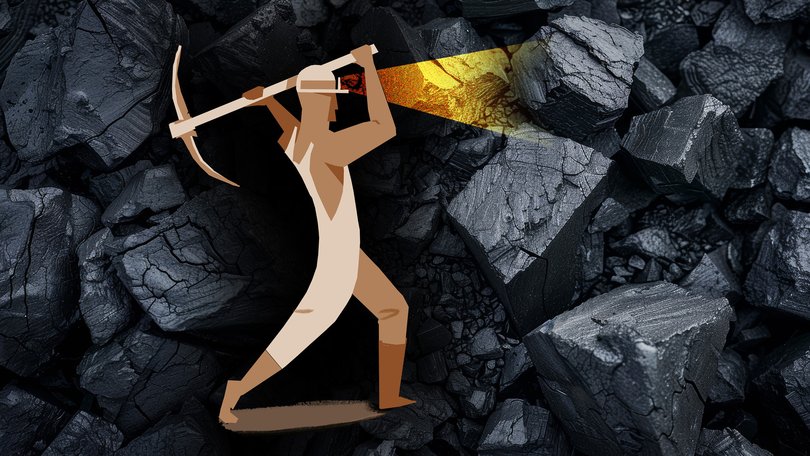The Economist: Why coal markets stay solid as economic crises and war shake most commodities

From some angles it seems as if thermal coal, the world’s dirtiest fuel, is having a tough year. Prices are down a bit. China, which gobbles up over half the world’s supply, is in economic trouble; a surge in hydropower generation there is squeezing out the fuel. In May G7 members agreed to phase out coal plants, where emissions are not captured, by 2035. Mining stocks are trading at a huge discount.
Zoom out a little, however, and it is clear the embers of thermal coal remain uncomfortably hot. (Metallurgical coal, burnt to produce steel, is a much smaller market.) Although prices have come down from the peaks reached in 2022, when the stand-off between Europe and Russia sparked a global dash for energy, they have stabilised at higher levels than before the war in Ukraine began, even in real terms. And in a period when economic wobbles, war and weather are shaking many commodities, coal markets have been placid. Is coal the new gold?
The price of coal is holding up despite formidable challenges. Mad restocking in 2023, followed by a mild winter, means that Europe’s storage facilities remain 65 per cent full, well above the long-run average. China’s stash is healthy, too.
Sign up to The Nightly's newsletters.
Get the first look at the digital newspaper, curated daily stories and breaking headlines delivered to your inbox.
By continuing you agree to our Terms and Privacy Policy.Supply is abundant: having risen by over 10 per cent in two years, China’s output is hitting records as the country seeks to cut dependence on imports. Russia has managed to redirect the 50 million tonnes of coal — worth about 3 per cent of globally traded volumes — it once sold to Europe. Meanwhile, the global economy is tepid, cooled by high interest rates, a strong dollar and lacklustre growth in China.
On top of this, the political will to move away from coal is reducing consumption, particularly in rich countries. Last year America and the EU reduced their use by 21 per cent and 23 per cent, respectively. In April Germany shut down 15 coal power plants in a single weekend.
China, too, is fast-tracking solar and wind at the expense of coal so as to cut pollution. The International Energy Agency, an official forecaster, reckons the country’s coal use will shrink by 4 per cent by 2026. Glen Kurokawa of CRU, a consultancy, predicts it will ebb as soon as next year.
Yet even as wealthy economies ditch the dirty stuff, developing ones are using more to keep the lights on. Many are in Asia, with India, where the economy is going gangbusters, leading the way. Coal has always been a cheap and reliable source of power, but the energy crisis in 2022 underlined these strengths.
Unlike natural gas — which, absent a pipeline, must be superchilled into a liquid and loaded on expensive, specialised vessels — coal is easy to transport to anywhere in the world. Energy-security concerns, and the search for profit, are trumping climate ones. A coal trader that serves Asian clients says it has become easier, not harder, to borrow from banks, even European ones, to finance transactions. Last year exports reached 1.5 billion tonnes worldwide, a record.
Even as demand moves eastward — China, India and South-East Asia consume three-quarters of global supply, up from a third in 2000 — other features of the market make it remarkably stable. Coal is almost entirely used to produce “baseload” power, the type that economies use to move at cruise speed, meaning plants which burn it are almost always on. Its limited use in industry and transport make it less sensitive to the economic cycle than other minerals and fuels.
Four-fifths is sold through long-term supply contracts, notes Tom Price of Liberum, a bank, which guarantees the bulk of demand. That is unlike oil, copper and many other commodities, which traders often buy on the spot market before hedging risk by buying derivatives contracts. Most coal is also consumed in the country in which it is produced.
In time, demand will wane for good. Yet that may not diminish coal’s appeal to investors, since supply will probably fall faster. In the late 2000s, when Chinese demand pushed coal prices to $US200 ($300) a tonne, a wave of investment in new mines followed. This time peaks above $US400 ($600) and prices that remain high have not triggered a similar rush. Outside China, capital expenditure by coal miners, uncertain about future demand, has cratered. Banks may finance traders, but they no longer want to lend money to get coal out of the ground. Acquiring permits for new mines is hellish.
Coal supply may therefore fall sharply, and do so sooner than most people anticipate. This may, in turn, transform today’s sure-fire bet into a riskier but potentially even more profitable proposition, with price spikes succeeded by busts as demand is suppressed. Existing coal investors who stay in the game, or new entrants with a desire to gamble, could hit the jackpot.
Private-equity groups, as well as Chinese and Indonesian companies, are already snapping up existing mines on the cheap in the hope of making it big, says Steve Hulton of Rystad Energy, a consultancy. King coal will reign for a while yet.
